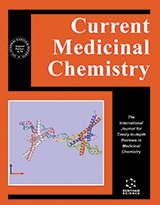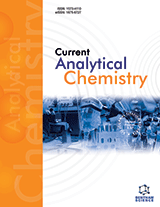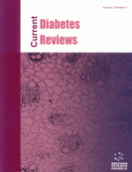
Abstract
The synthesis of recombinant human erythropoietin has marked a turning point in the treatment of anaemia secondary to chronic kidney disease. However, the potentially fatal cardio- and cerebrovascular complications of the intake of high-doses of ESAs (erythropoiesis-stimulating agents), such as those observed in athletes who resort to doping, reason out the ever-prevalent debate concerning the balance between the risks and benefits of ESA administration for therapeutic purposes. Hence, there is still a discussion as to what values haemoglobin should ideally be maintained at. Additional concerns arise in cancer patients due to the ability of erythropoietin to act as an angiogenic and, in general, as a cell growth factor, because this might favour the progression of neoplastic disease. We summarized the prominent points of the latest guidelines on the management of anaemia in nephropathic patients, also identifying the possible risks that may result from the tendency to aim at too low haemoglobin levels.
Keywords: Erythropoietin, erythropoietin receptors, guidelines.
Current Medicinal Chemistry
Title:Does Erythropoietin Always Win?
Volume: 21 Issue: 7
Author(s): V. Cernaro, A. Lacquaniti, A. Buemi, R. Lupica and M. Buemi
Affiliation:
Keywords: Erythropoietin, erythropoietin receptors, guidelines.
Abstract: The synthesis of recombinant human erythropoietin has marked a turning point in the treatment of anaemia secondary to chronic kidney disease. However, the potentially fatal cardio- and cerebrovascular complications of the intake of high-doses of ESAs (erythropoiesis-stimulating agents), such as those observed in athletes who resort to doping, reason out the ever-prevalent debate concerning the balance between the risks and benefits of ESA administration for therapeutic purposes. Hence, there is still a discussion as to what values haemoglobin should ideally be maintained at. Additional concerns arise in cancer patients due to the ability of erythropoietin to act as an angiogenic and, in general, as a cell growth factor, because this might favour the progression of neoplastic disease. We summarized the prominent points of the latest guidelines on the management of anaemia in nephropathic patients, also identifying the possible risks that may result from the tendency to aim at too low haemoglobin levels.
Export Options
About this article
Cite this article as:
Cernaro V., Lacquaniti A., Buemi A., Lupica R. and Buemi M., Does Erythropoietin Always Win?, Current Medicinal Chemistry 2014; 21 (7) . https://dx.doi.org/10.2174/09298673113206660270
| DOI https://dx.doi.org/10.2174/09298673113206660270 |
Print ISSN 0929-8673 |
| Publisher Name Bentham Science Publisher |
Online ISSN 1875-533X |
Call for Papers in Thematic Issues
Advances in Medicinal Chemistry: From Cancer to Chronic Diseases.
The broad spectrum of the issue will provide a comprehensive overview of emerging trends, novel therapeutic interventions, and translational insights that impact modern medicine. The primary focus will be diseases of global concern, including cancer, chronic pain, metabolic disorders, and autoimmune conditions, providing a broad overview of the advancements in ...read more
Approaches to the treatment of chronic inflammation
Chronic inflammation is a hallmark of numerous diseases, significantly impacting global health. Although chronic inflammation is a hot topic, not much has been written about approaches to its treatment. This thematic issue aims to showcase the latest advancements in chronic inflammation treatment and foster discussion on future directions in this ...read more
Cellular and Molecular Mechanisms of Non-Infectious Inflammatory Diseases: Focus on Clinical Implications
The Special Issue covers the results of the studies on cellular and molecular mechanisms of non-infectious inflammatory diseases, in particular, autoimmune rheumatic diseases, atherosclerotic cardiovascular disease and other age-related disorders such as type II diabetes, cancer, neurodegenerative disorders, etc. Review and research articles as well as methodology papers that summarize ...read more
Chalcogen-modified nucleic acid analogues
Chalcogen-modified nucleosides, nucleotides and oligonucleotides have been of great interest to scientific research for many years. The replacement of oxygen in the nucleobase, sugar or phosphate backbone by chalcogen atoms (sulfur, selenium, tellurium) gives these biomolecules unique properties resulting from their altered physical and chemical properties. The continuing interest in ...read more
 42
42
- Author Guidelines
- Graphical Abstracts
- Fabricating and Stating False Information
- Research Misconduct
- Post Publication Discussions and Corrections
- Publishing Ethics and Rectitude
- Increase Visibility of Your Article
- Archiving Policies
- Peer Review Workflow
- Order Your Article Before Print
- Promote Your Article
- Manuscript Transfer Facility
- Editorial Policies
- Allegations from Whistleblowers
- Announcements
Related Articles
-
The Na+/H+ Exchanger: A Target for Cardiac Therapeutic Intervention
Current Drug Targets - Cardiovascular & Hematological Disorders Relationship between SNP rs1764391 and Susceptibility, Risk Factors, Gene-environment Interactions of Acute Myocardial Infarction in Guangxi Han Chinese Population
Current Pharmaceutical Biotechnology Xanthine Derivatives as Agents Affecting Non-dopaminergic Neuroprotection in Parkinson’s Disease
Current Medicinal Chemistry The Antioxidant Effects of Radix Astragali (Astragalus membranaceus and Related Species) in Protecting Tissues from Injury and Disease
Current Drug Targets Epidemiology of Hypertension and Diabetes Mellitus in Latin America
Current Hypertension Reviews Human Immunodeficiency Virus-Mononuclear Phagocyte Interactions:Emerging Avenues of Biomarker Discovery, Modes of Viral Persistence and Disease Pathogenesis
Current HIV Research Patenting of Nanopharmaceuticals in Drug Delivery: No Small Issue
Recent Patents on Drug Delivery & Formulation Steroid Hybrid Systems: New Molecular Entities with Potential Therapeutical Spectrum
Current Drug Therapy Primary and Secondary Prevention Trials in Alzheimer Disease: Looking Back, Moving Forward
Current Alzheimer Research Blocking Leukocyte Rolling: Does it have a Role in Disease Prevention?
Vascular Disease Prevention (Discontinued) Repositioning of HIV Aspartyl Peptidase Inhibitors for Combating the Neglected Human Pathogen Trypanosoma cruzi
Current Medicinal Chemistry Novel Therapeutic Approaches and Targets for the Treatment of Cardiovascular and Immunological Diseases
Current Pharmaceutical Biotechnology Role of microRNAs on Blood Brain Barrier Dysfunction in Vascular Cognitive Impairment
Current Drug Delivery Omega-3 Fatty Acids: Repurposing Opportunities for Cognition and Biobehavioral Disturbances in MCI and Dementia
Current Alzheimer Research Cannabinoid Receptor Type 2 Activation in Atherosclerosis and Acute Cardiovascular Diseases
Current Medicinal Chemistry Cardiovascular Involvement in Pediatric Systemic Autoimmune Diseases: The Emerging Role of Noninvasive Cardiovascular Imaging
Inflammation & Allergy - Drug Targets (Discontinued) Cardiac Complications and COVID-19: A Review of Life-threatening Co-morbidities
Current Cardiology Reviews Diabetes and COVID-19; a Review of Possible Mechanisms
Current Pharmaceutical Design Platelet SERT as a Peripheral Biomarker of Serotonergic Neurotransmission in the Central Nervous System
Current Medicinal Chemistry Targeting Stress Activated Protein Kinases, JNK and p38, as New Therapeutic Approach for Neurodegenerative Diseases
Central Nervous System Agents in Medicinal Chemistry


























